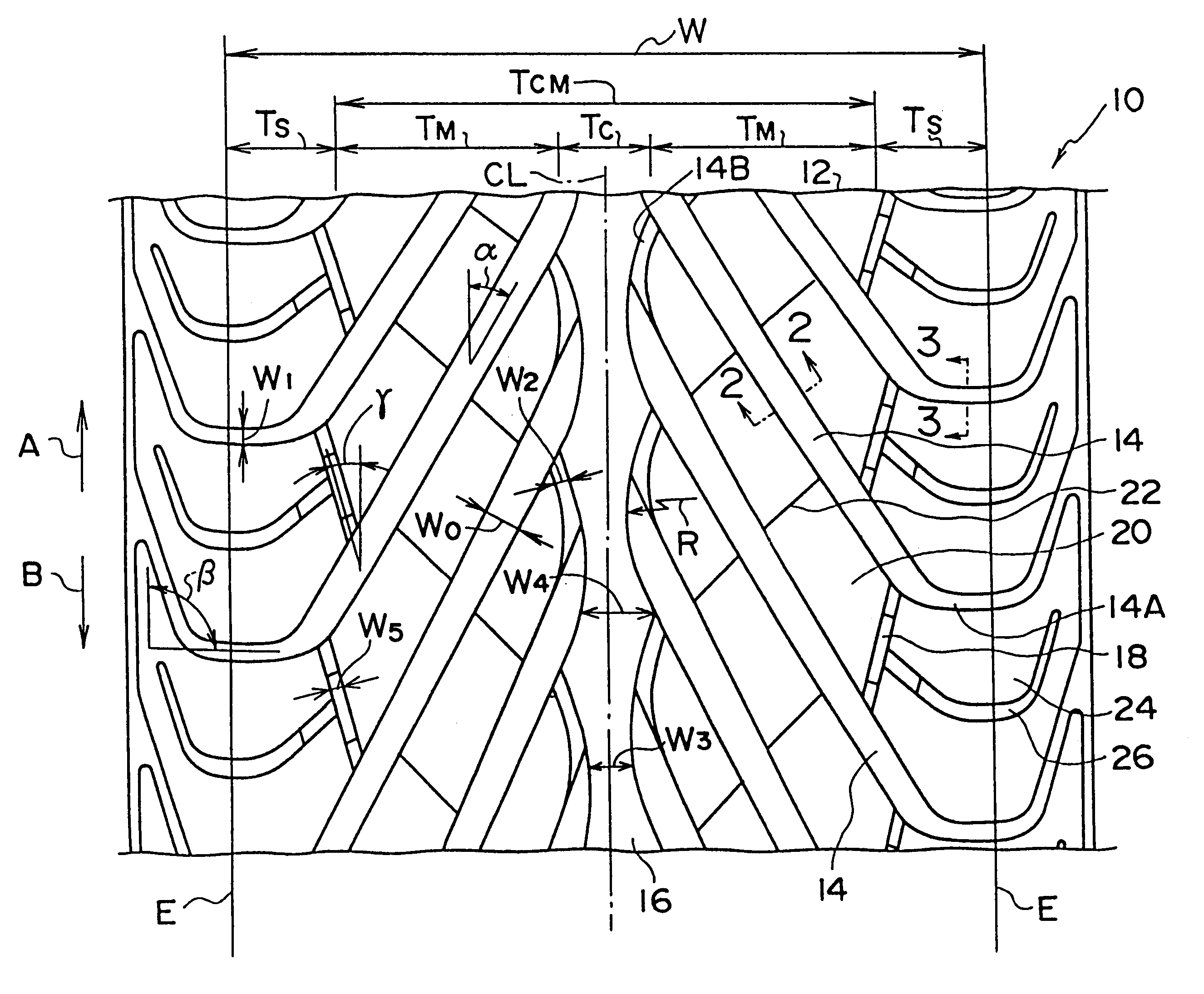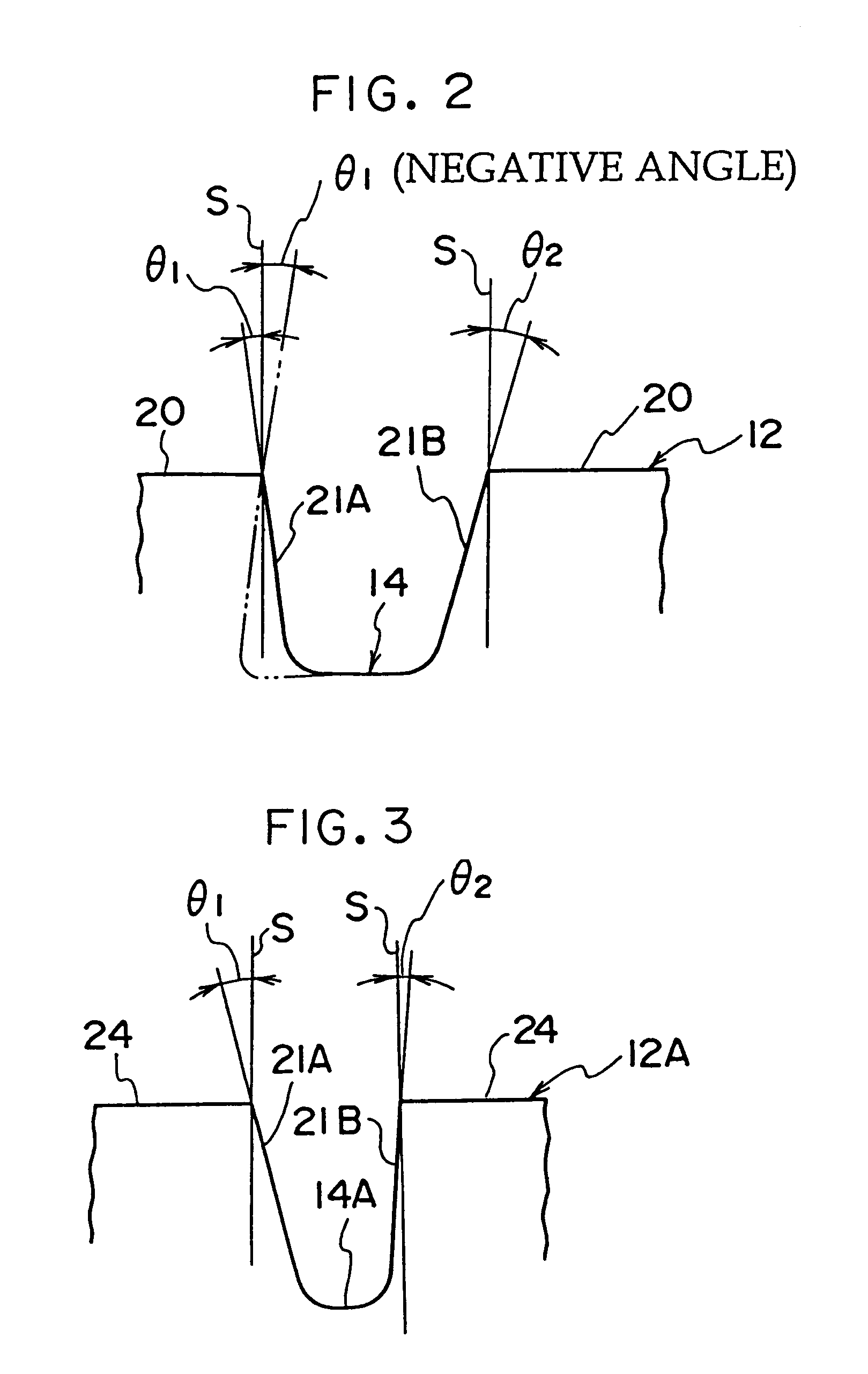Pneumatic tire having directional tread pattern
a pneumatic tire and groove technology, applied in the direction of non-skid devices, vehicle components, transportation and packaging, etc., can solve the problems of easy uneven wear at the block, pattern noise worsening, pattern noise increasing,
- Summary
- Abstract
- Description
- Claims
- Application Information
AI Technical Summary
Benefits of technology
Problems solved by technology
Method used
Image
Examples
Embodiment Construction
Experimental Example Tires were filled to an internal pressure of 2.5 kg / cm.sup.2, were installed on an actual vehicle (a European middle class sedan) carrying a load of two occupants, and the water-removing ability, pattern noise, pattern noise of the worn tire, and operational stability were tested.
The tires (tire size 225 / 45ZR17) used for the Comparative Examples 1, 2 and the Example all had the same tread pattern (the tread pattern of FIG. 1), but the angles of inclination of the groove wall surfaces of the inclined main grooves were varied as shown in Table 1.
The testing methods were as follows.
1. Water-Removing Ability: The vehicle traveled on a propulsion 10 mm wet road surface, and the speed at which hydroplaning occurred was measured.
2. Pattern Noise: A microphone was placed at the position of the ear of the driver, and the noise at the time the vehicle traveled at 60 km / h on a straight, flat road was measured.
3. Pattern Noise of the Worn Tire: After the tire had traveled o...
PUM
 Login to View More
Login to View More Abstract
Description
Claims
Application Information
 Login to View More
Login to View More - R&D
- Intellectual Property
- Life Sciences
- Materials
- Tech Scout
- Unparalleled Data Quality
- Higher Quality Content
- 60% Fewer Hallucinations
Browse by: Latest US Patents, China's latest patents, Technical Efficacy Thesaurus, Application Domain, Technology Topic, Popular Technical Reports.
© 2025 PatSnap. All rights reserved.Legal|Privacy policy|Modern Slavery Act Transparency Statement|Sitemap|About US| Contact US: help@patsnap.com



